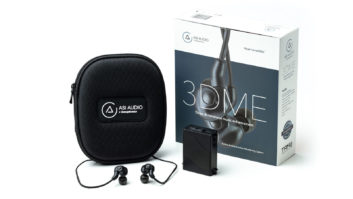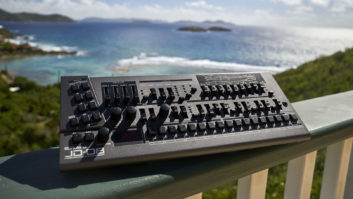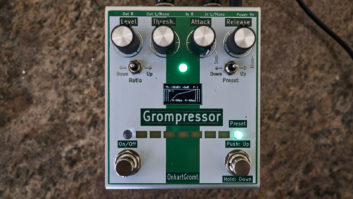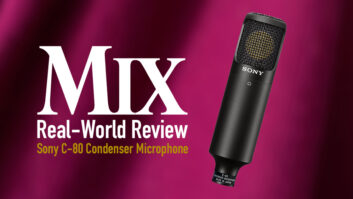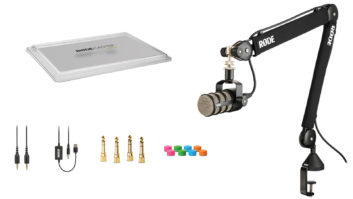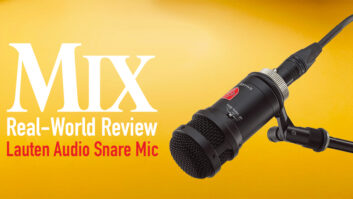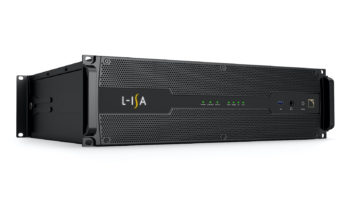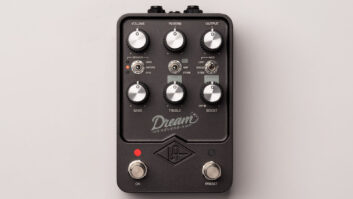In 1992, Denmark’s distinguished measurement equipment manufacturer Brüel & Kjaer spun off its specialist pro audio division. At that point, the sales and service of the B&K Series 4000 microphones were outsourced to Morten Støve and Ole Brøsted Sørensen, two former employees. Shortly afterward, they went on to form Danish Pro Audio (DPA), which launched its first product, a series of compact cardioid and omnidirectional condenser mics, in 1994. Since then, DPA has established itself as a leading manufacturer of high-quality condenser studio microphones for professional applications in studio, film & video, broadcast and sound reinforcement.
My first DPA purchase was a pair of 4061 Miniature Omnidirectional Microphones which I fell in love with after reviewing them nearly 20 years ago. Since the 4060 and 4061 share identical capsules but have slightly different sensitivities, I was very pleased to discover that the DPA 4560 CORE Binaural Headset Microphone (4560) was based around the current version of the 4060, now called the 4060 CORE Miniature Omnidirectional Microphone.
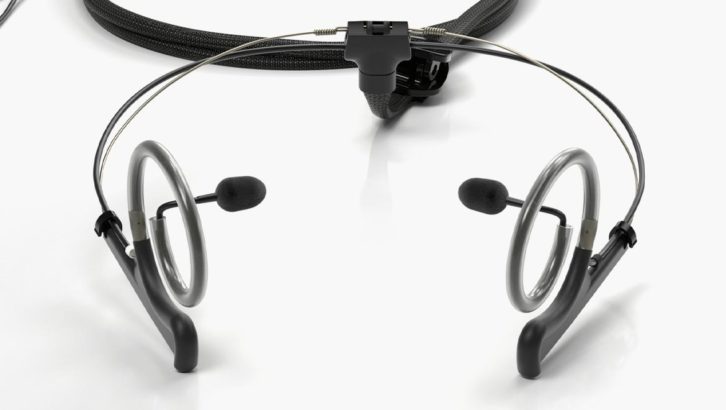
The 4560 is a handpicked stereo pair (sensitivity within ±1.5 dB) of 4060 CORE microphones uniquely mounted on a pair of earhooks (from DPA’s 4266 Flex headset). The headset is ergonomically designed for easy adjustment and a comfortable fit. It is adjustable to fit any head shape and ear size and from more than a few feet, is virtually invisible. Included with the 4560 is a pair of foam windscreens that both secure the microphone’s position in the ear and provide wind noise damping. Since the 4560 terminates in DPA MicroDot connectors, it can be easily utilized with DPA’s standard XLR adapters along with high-end mic preamps, but it also works with the MMA-A Digital Audio Interface. This creates a compact and completely mobile binaural kit as once the 4560 CORE BHM is connected to the MMA-A’s MicroDot connectors, the MMA-A can then be connected directly to an iOS device or the USB port on a Windows or Mac PC. iOS operation is via the free DPA MAA-A app. The app includes gain control, HP filter activation, and the ability to store settings into one of four presets. There are also three recording Mode options (Mono, Stereo or Dual), but recording binaural requires the interface to be set to stereo.
Binaural recording is centered on the principle of placing microphones on an artificial head or an actual human’s head with the mics positioned either just outside the ear canals or at the bottom of the ear canal in close proximity to the eardrum. The recording technique facilitates extremely accurate sound reproduction through headphones, giving the listener the sense of actually being in the space where the recording was made. Creating binaural recordings has traditionally been quite expensive as dummy heads configured for binaural recording typically cost several thousands of dollars, and recording has to be done utilizing expensive low-noise mic preamps along with a professional recording medium. The 4560 is affordable ($1,100) and yields stunning results that will no-doubt rival the results from a binaural recording configuration that costs several thousand dollars.
Binaural recording captures the Head-Related Transfer Function (HRTF) which expresses how much the influence of the head, ears and torso affect the transmission of a soundwave from a sound source to the eardrums. Ear shape and size, head shape and size, and the distance between the ears are just some of the factors that contribute to the HTRF. This means that the most accurate binaural recordings will always be made using the listener’s head, not someone else’s head or a dummy head. That said, any binaural recording will typically create a more encompassing and 3D listening experience for everyone, even if the HRTF isn’t their own.
The applications for binaural recordings are endless and include capturing sound effects and location ambience for theatrical podcasts, capturing sound effects and/or soundscapes for film, TV, video games and VR, and capturing musical performances for headphone playback.
I’m a bit of an ambience fanatic, so I couldn’t wait to take the 4560 into the world to capture some audio. I found the headset a bit clumsy and slow to properly fit the first couple of times I put it on, but once I became used to the placement and fit, taking it on and off became second nature and took virtually no time.
The majority of my 4560 recording was done utilizing the MAA-A interface and iOS app, and everything worked like a charm. Capturing everything from the sound of traffic at a busy intersection to birds in a park to a winter thunderstorm (yeah, I live in Nashville, so it rains here even in the middle of the winter!) was flawless. I even snuck the headset into a symphony performance, where I wonderfully recorded a 62-piece orchestra at 24-bit/96 kHz.
While binaural recordings are designed for headphone listening, an inverted HRTF can be utilized to convert the binaural recording into a stereo recording perfectly suited for loudspeaker playback. DPA recommends a simple (+2 dB low shelf @ 480 Hz, -11dB bell, Q=1 @ 4 kHz, +8dB, Q=2 @8 kHz) curve to utilize a binaural recording for stereo playback. Of course, every HRTF is unique, so this curve becomes a starting point and adjustments should be made from this point according to acoustical analysis and/or taste. I used the 4560 to record an acoustic guitar in the studio and then applied the HRTF “decoder curve” to the recorded audio to use it in a track I was engineering, and it worked perfectly. I should also point out that users utilizing the 4560 CORE BHM for scientific purposes will want to incorporate the DPA DWA4060 calibrator inserts so the microphones can be perfectly calibrated.
In true DPA fashion, the DPA 4560 CORE Binaural Headset Microphone is a spectacular device that is fun to use, but more importantly, it wonderfully captures audio without compromise. Anyone interested in binaural or portable hi-resolution recording should give it top consideration.
DPA Microphones • https://www.dpamicrophones.com/
